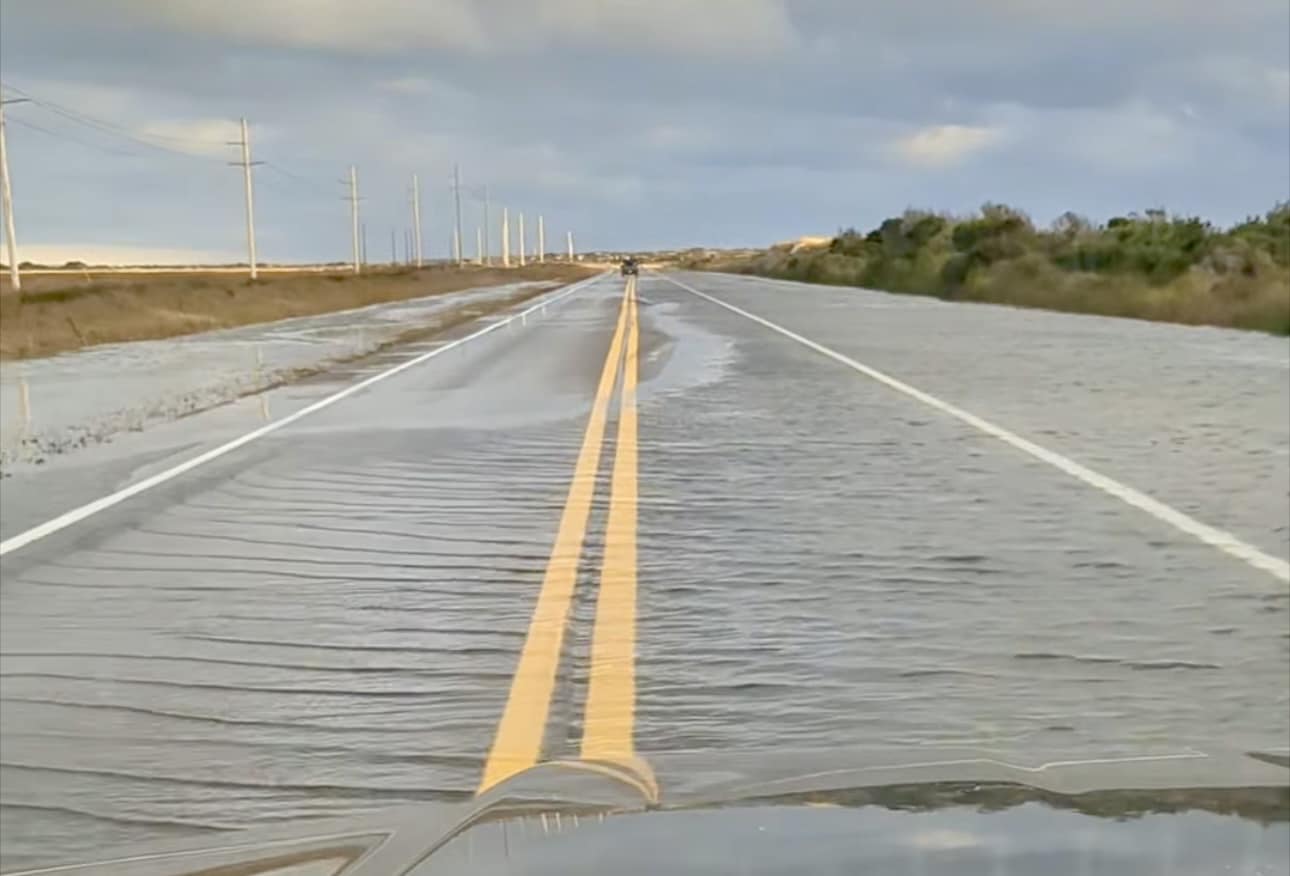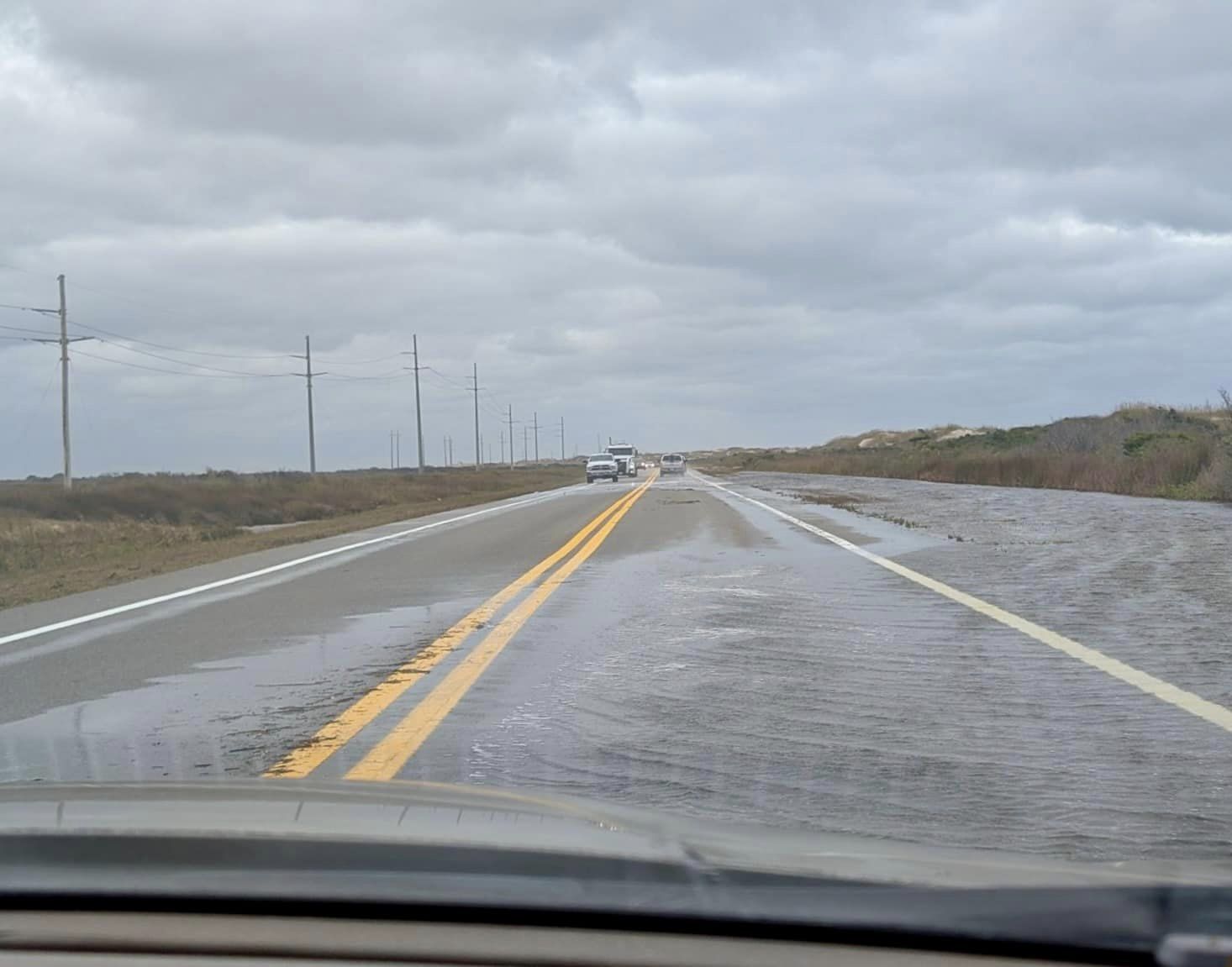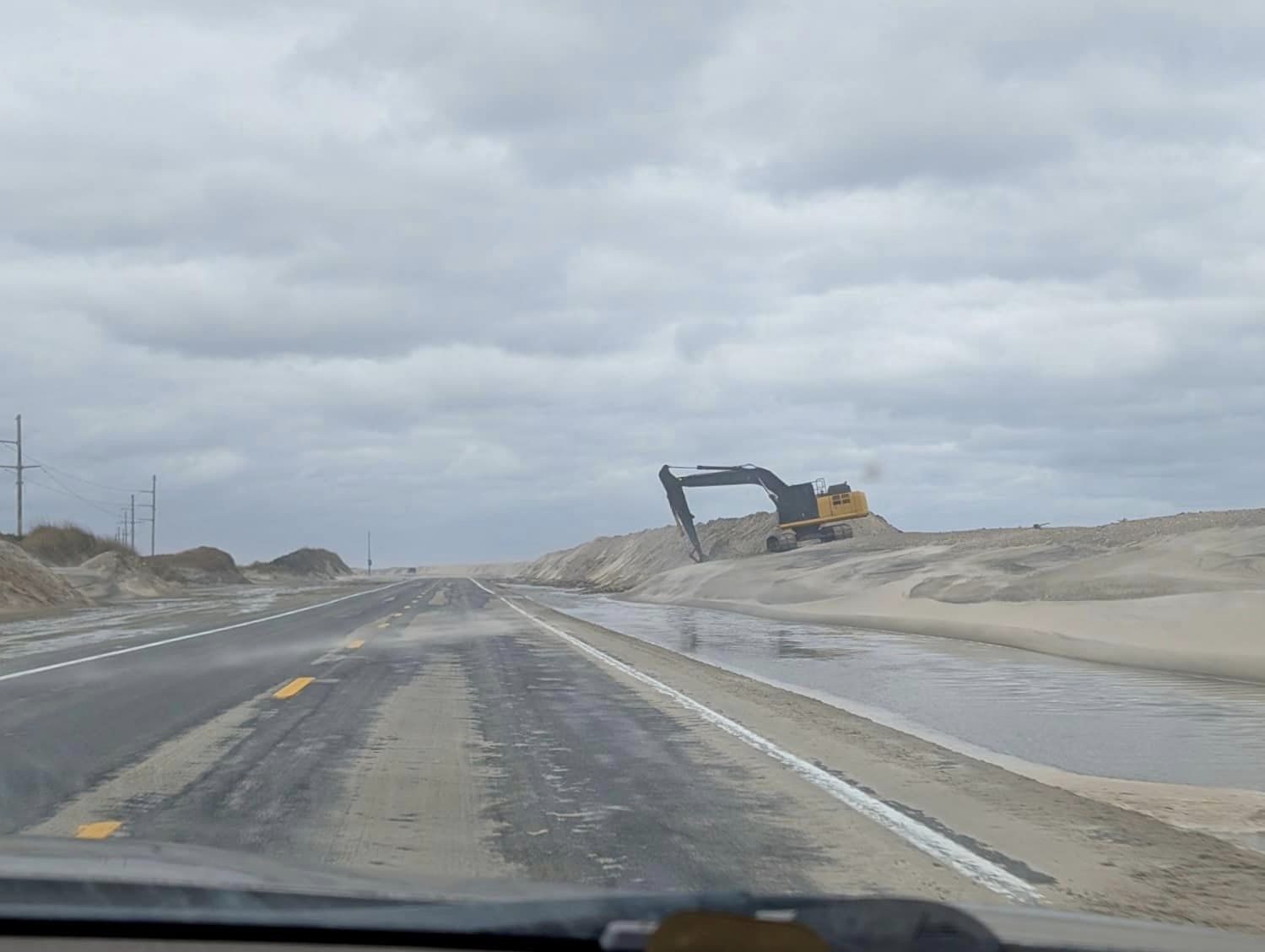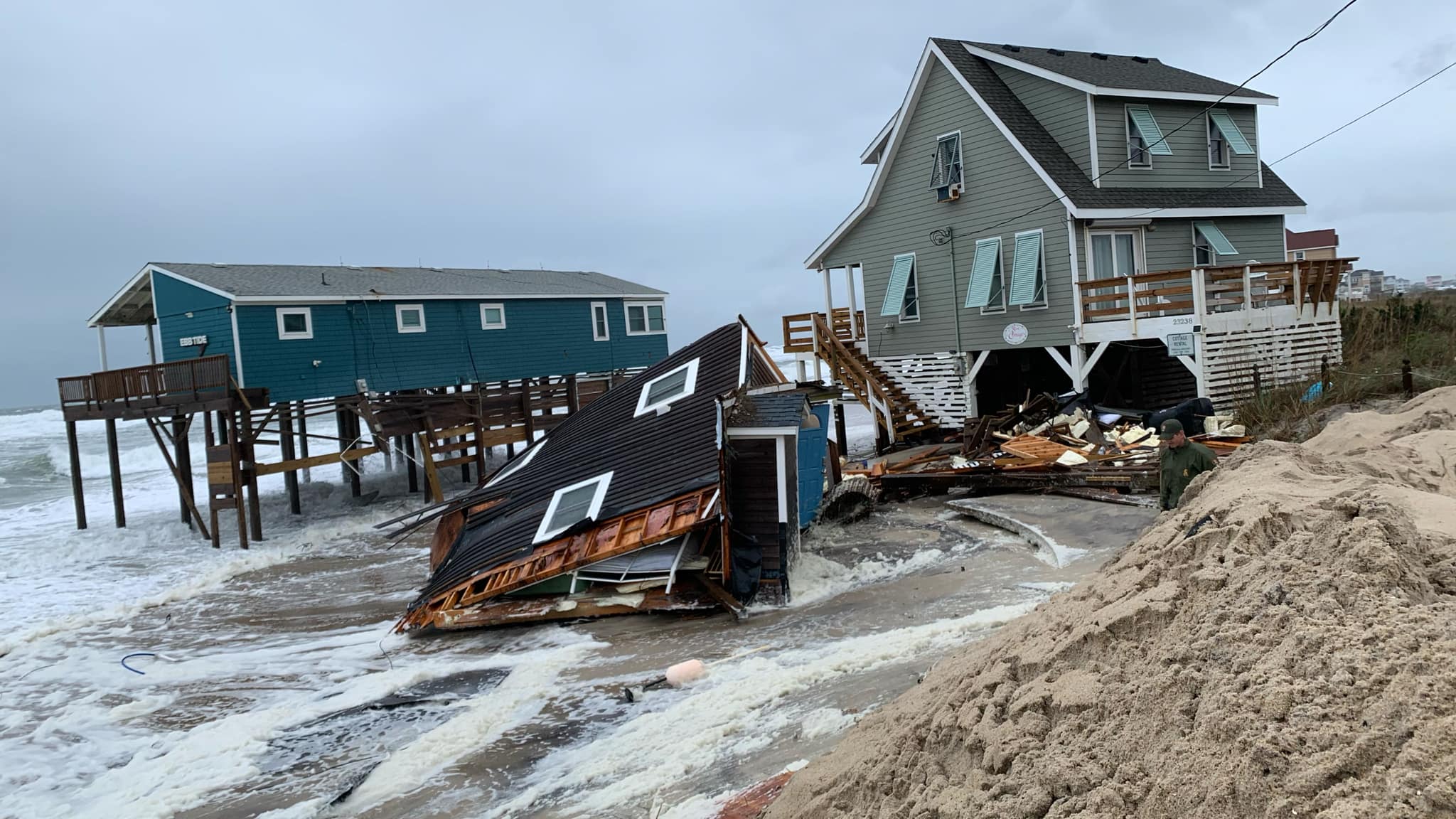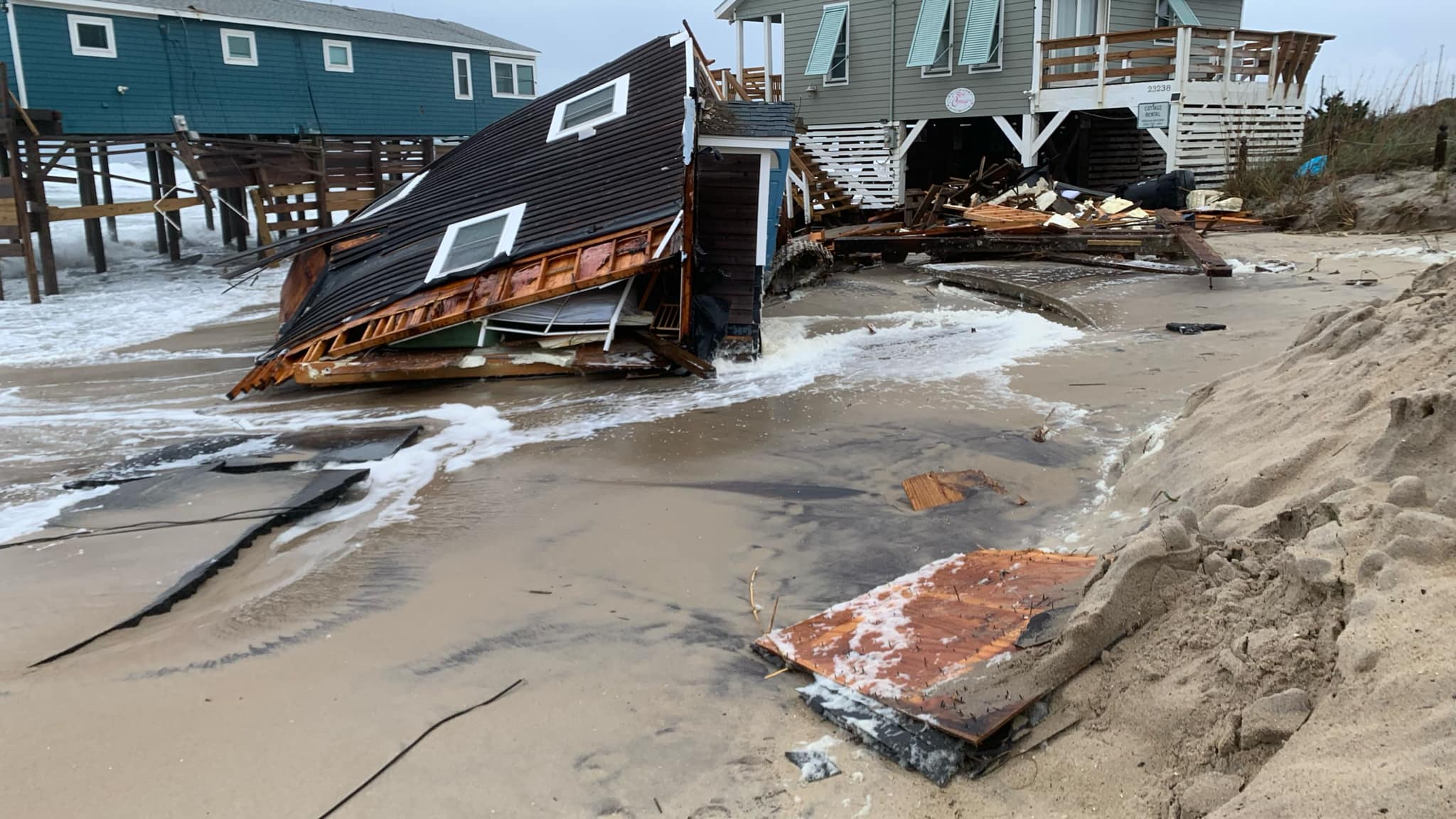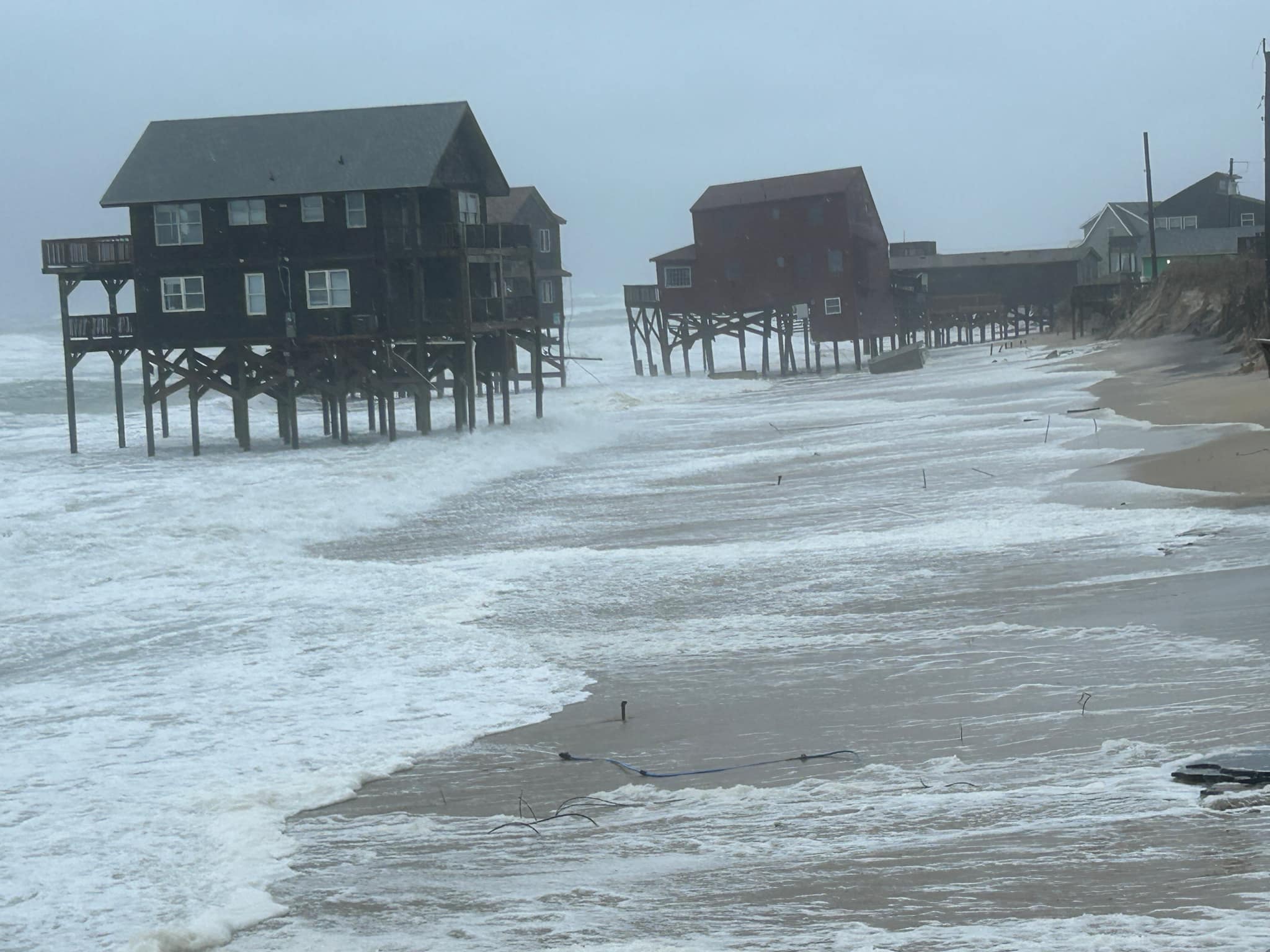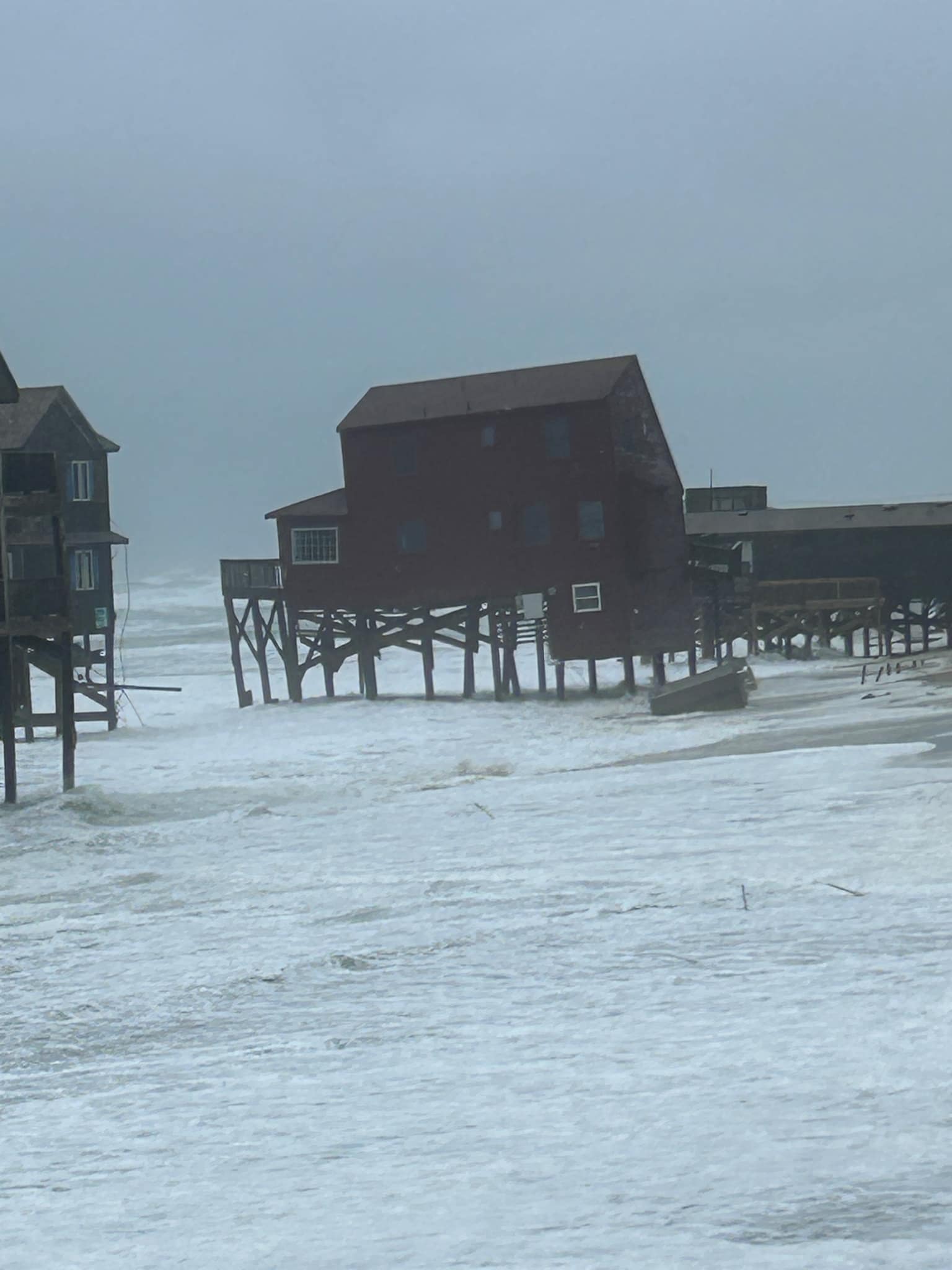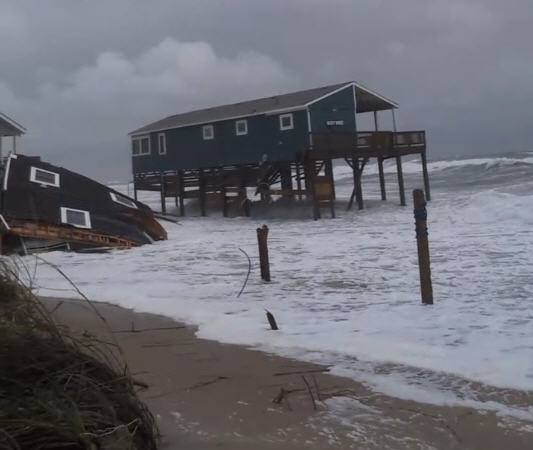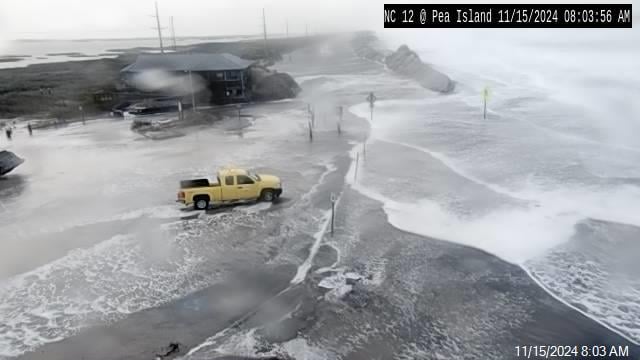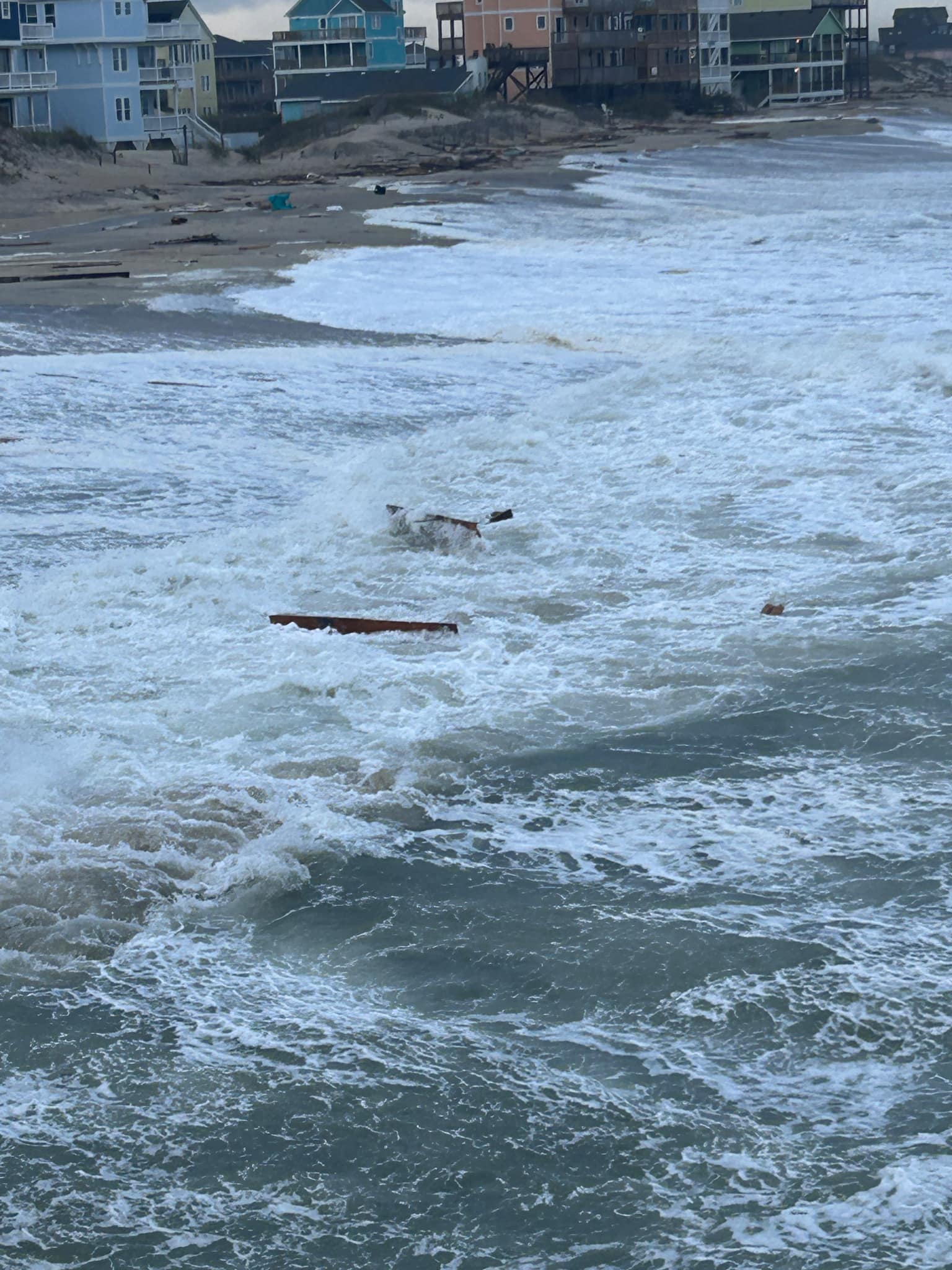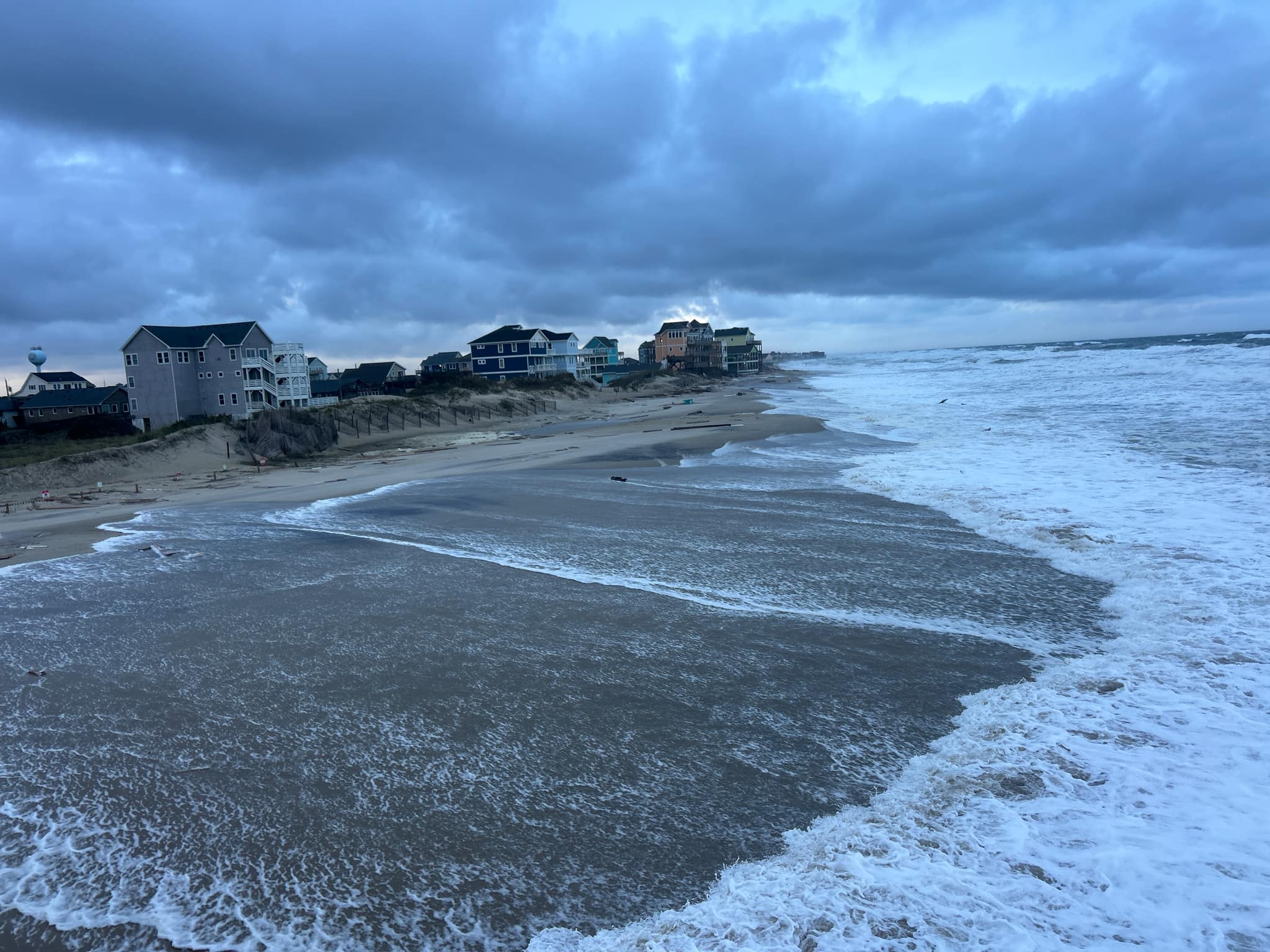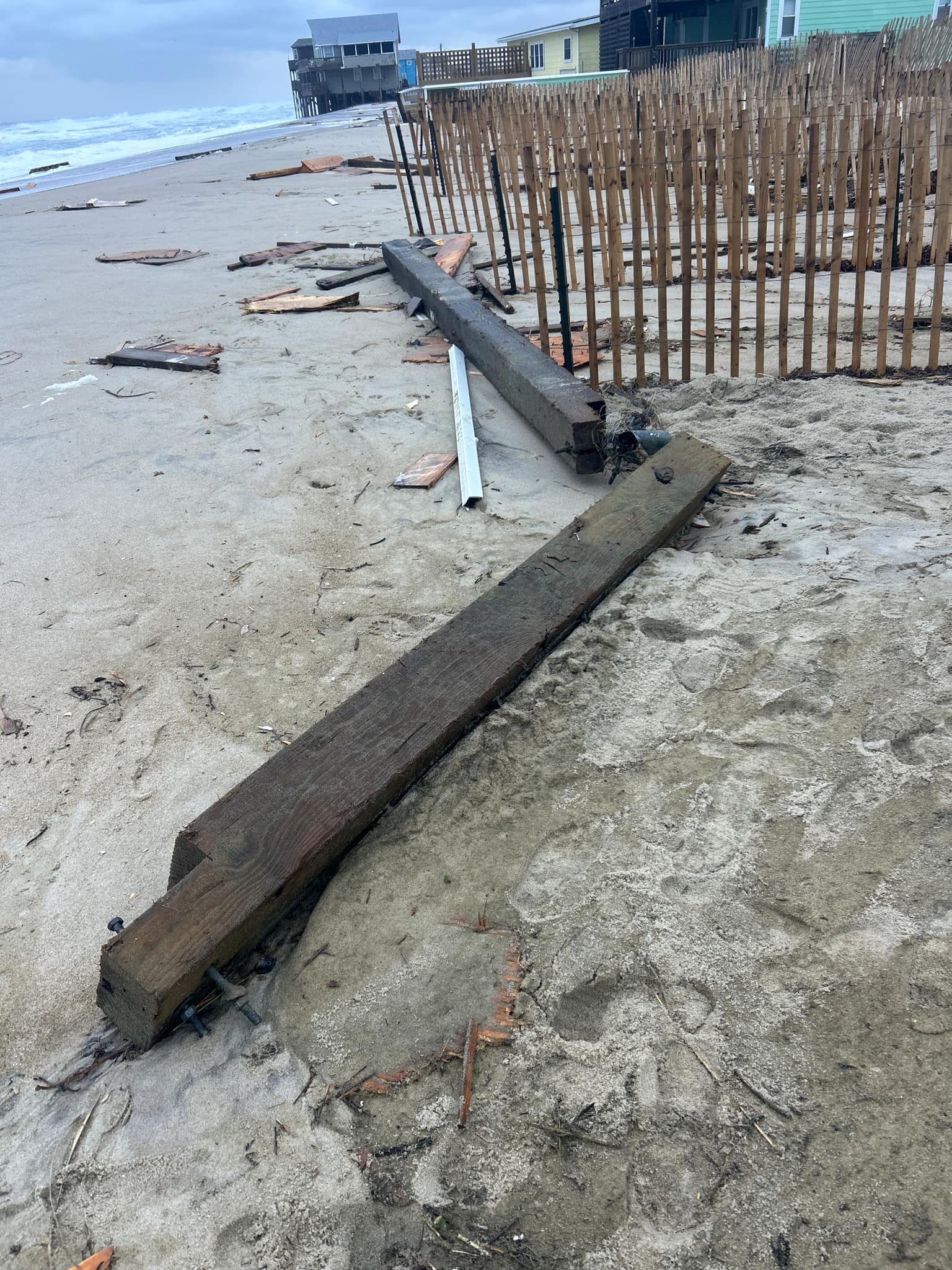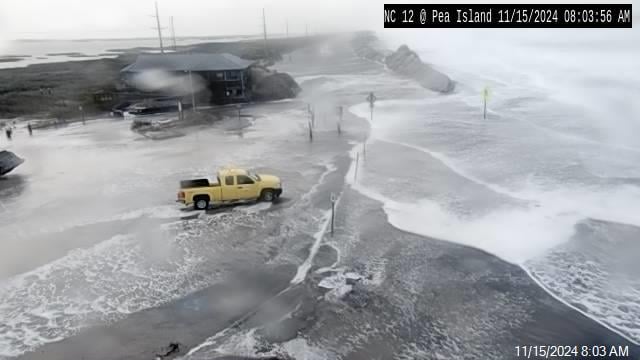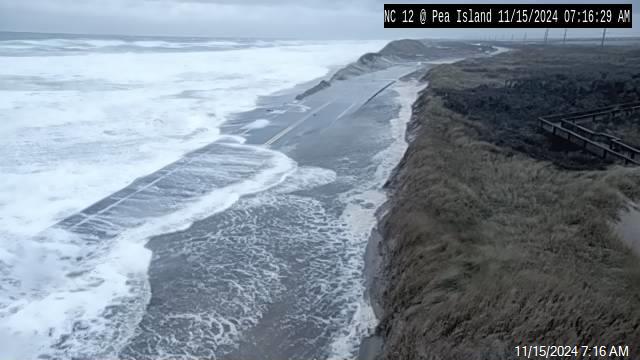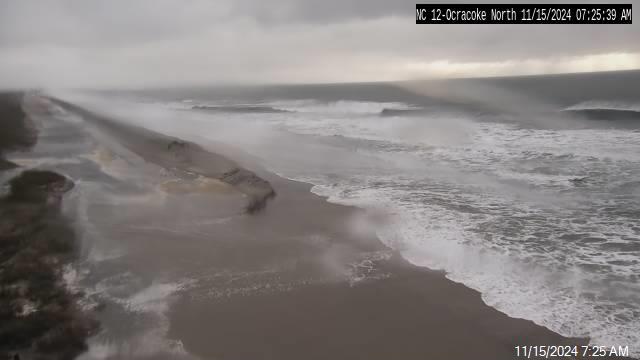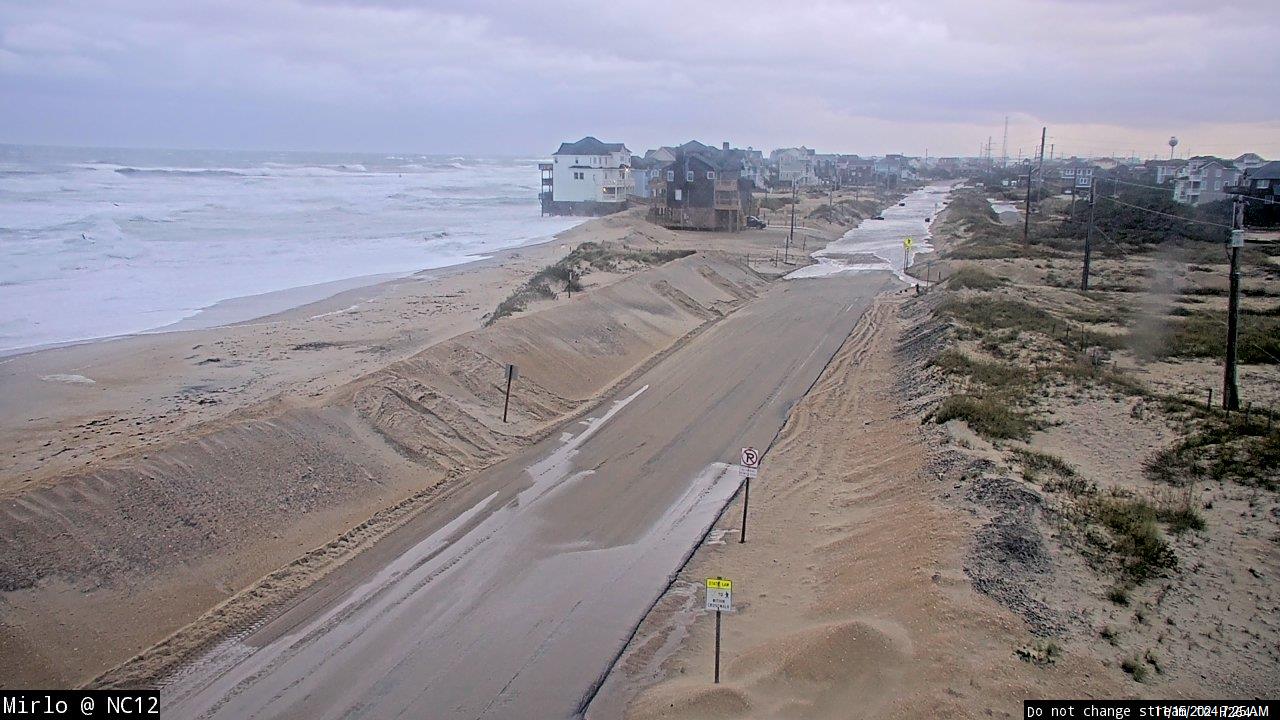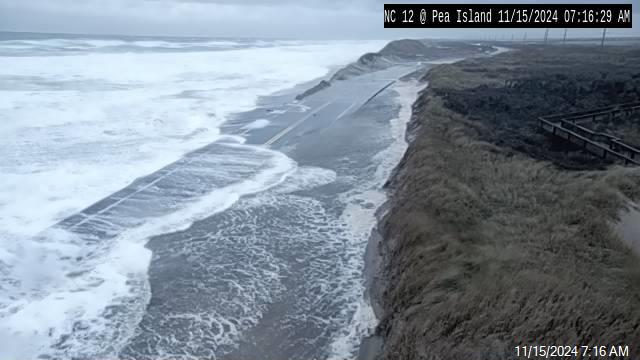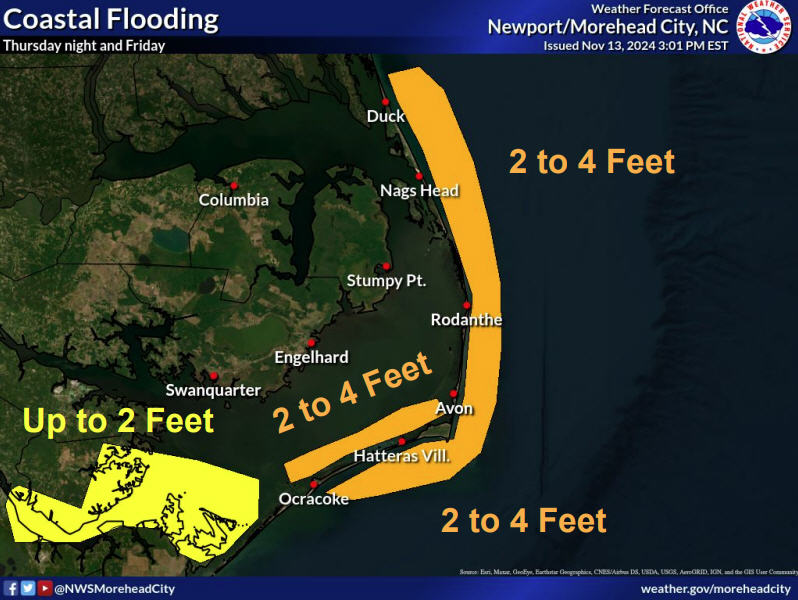Long-delayed Ocracoke passenger ferry gets underway
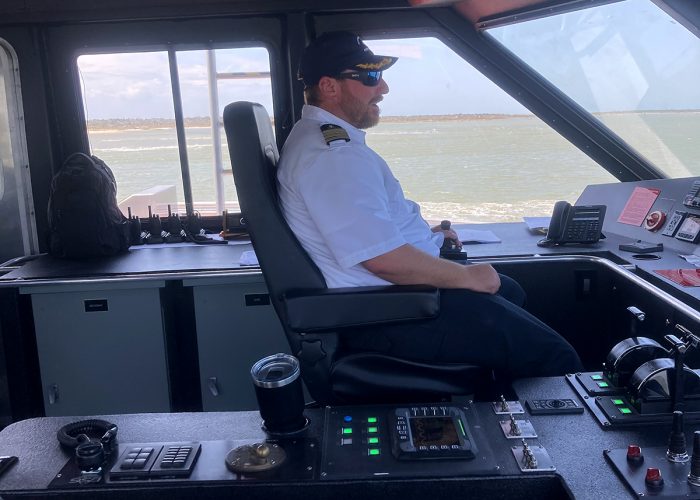
In a bit of serendipity, the North Carolina Ferry Division celebrated its 75th anniversary Monday morning by christening its modern new vessel, the Ocracoke Express, the first and only passenger ferry in the system.
“It’s been a long time coming,” North Carolina Secretary of Transportation Eric Boyette said to a small gathering under the shaded terminal in front of the sleek Carolina blue and white ferry waiting at the dock. “But look at what we have. Look at this scene.”
Behind him, the blue-green water in Hatteras Inlet, the passage between Pamlico Sound and the Atlantic Ocean, lapped gently against pilings, belying its recent five-day fury from a strong coastal low. But the morning’s bright sun and pleasant temperature added to the upbeat mashup of old and new milestones.
While giving a shoutout to the original ferry builder and operator Toby Tillett of Wanchese, who, along with his father, began ferrying cars across Oregon Inlet in the 1920s, Boyette couldn’t resist good-humored teasing of current N.C. Ferry Division director Harold Thomas of Newport.
“Harold might have been the first captain of that vessel,” he joked.
After remarks from Boyette, who was joined at the event by N.C. Department of Transportation Deputy Secretary of Multimodal Transportation Julia White and Board of Transportation member for Division 1 Allen Moran, Hyde County Manager Kris Noble, wielding the requisite bottle of champagne, christened the Ocracoke Express with a hearty slam.
The group was then invited to tour the shiny new vessel, which is captained by Marshall Foster, a native of Hatteras village who has worked for the division since 2012, and Anthony Gavetti, who, like Thomas, hails from Carteret County. The captains will be piloting the vessel all summer in split shifts of seven, 12-hour days. They agreed that operating the passenger ferry is considerably different than running the bigger vehicle ferries.
“It’s night and day,” Gavetti said while waiting in the pilot house before a quick jaunt for the media. “It’s just a completely different system.”
For instance, the Hatteras-class ferry engine is 1,200 horsepower and lumbers along at about 9 knots an hour, while the passenger ferry is 3,200 horsepower and can zip through the water at about 25 knots. The more agile catamaran-style vessel is highly maneuverable.
“It’s new to us,” Gavetti said. “Of course, it’s fun.”

Equipped with 96 seats in its air-conditioned interior, the new ferry has 26 additional seats on its top deck, which is mostly open. The boat includes two wheelchair tie downs, 16 bicycle racks and a concession area for passengers to enjoy snacks and drinks during the trip between Hatteras and Ocracoke villages, which takes about 70 minutes each way.
Despite the considerable difference in speed from the vehicle ferries, the lighter passenger ferry travels directly to the village, whereas the vehicle ferry brings occupants to a dock on the north end of the island, 13 miles from the village. Although the passenger ferry requires tickets, which cost $5 each way, they can be reserved in advance, unlike the free Hatteras-Ocracoke vehicle ferries, which are first come, first served and can result in long waits during the busy season.
The impetus for the passenger ferry service was the need to address those long lines. Last year, a total of 16,594 people opted to hop on the passenger ferry, most of whom left their vehicle behind in the expanded parking lot by the Hatteras ferry dock.
When passengers are dropped off at the Silver Lake harbor dock in Ocracoke village, they can board a free tram to the village’s shops and attractions. There are also bicycles and golf carts available to rent in the village, or people can bring their own bicycles on the ferry for a $1 fee. The Ocracoke Express, which began ferrying passengers Tuesday, is scheduled for three trips a day from each side through Sept. 5.
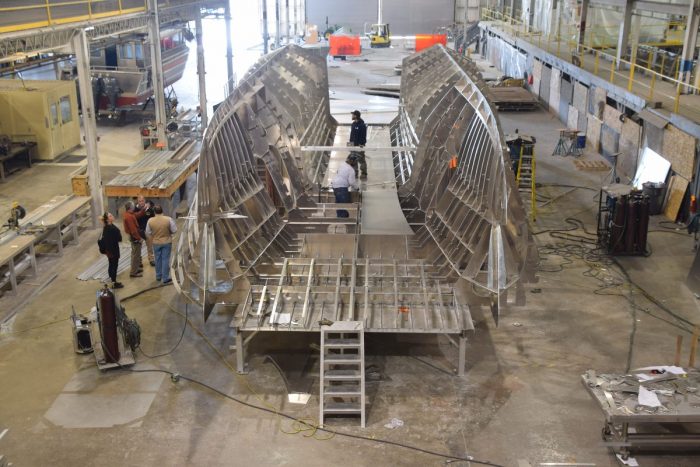
Construction challenges
Not been smooth sailing for the passenger ferry, originally planned for launch in spring 2018, as set out in the $4.4 million contract with U.S. Workboats in Hubert in Onslow County.
Delays were blamed on difficulties with finding workers, among other problems, resulting in legal actions, including a $1,000-per-day fine against the contractors starting in August 2018.
Ferry Division spokesman Tim Hass said the state paid $3.6 million of the $4.4 million total cost, but stopped paying April 22. Hass said further details about the fine were not immediately available.
“All the lawsuits (between NCDOT and U.S. Workboats) have been settled in our favor,” Hass said on Monday.
US Watercraft, the commercial boatbuilding division of Waterline Systems, took over and finished construction of the aluminum ferry at the same waterfront facility in Hubert “after the original builder closed its doors,” according to a May 11 article published on the website Workboat.
After building new infrastructure for the passenger ferry on both Ocracoke and Hatteras islands, the state had decided in 2019 to lease a similar passenger ferry from a private company until issues with the state vessel could be resolved and it could be completed.
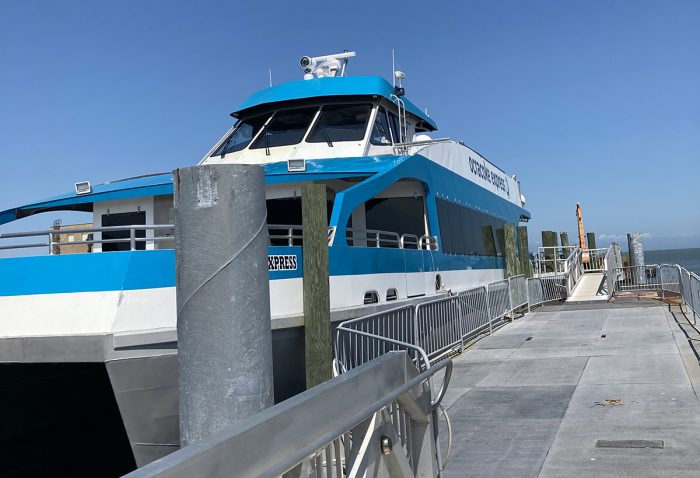
Tillett’s ferry
Perhaps the spirit of innovation, adaptation and perseverance that it took to get the Ocracoke Express to launch day is rooted in the origins of the ferry system. That’s when Toby Tillett took over a tug-and-barge service in Oregon Inlet that could carry two cars at a time. Not long after, he decided to build a 45-foot-long ferry that could transport two vehicles, and he later expanded to a larger ferry that could carry more vehicles, according to an Outer Banks History Center video.
Considering that Oregon Inlet is one of the orneriest waterways on the East Coast, Tillett proved to be a remarkably skilled captain. In 25 years of running his ferries back and forth across the inlet notorious for its shifting shoals and powerful currents, Tillett not only never lost a vehicle, he was only ever out of service for a total of 15 days, the History Center reported.
Officially, Tillett sold his business to the state in 1951, but North Carolina had been subsidizing the tolls for his customers for years.
Tillett died in a tractor accident seven years after the sale, according to an obituary in the Coastland Times published Nov. 21, 1958.
“At one time or another,” the write-up said, “he had ferried just about every person living on Hatteras Island.”
Before the state purchased the Oregon Inlet service, it had established its first fully-owned ferry run from the Dare County mainland at Manns Harbor to Roanoke Island in 1947.
Today, under the umbrella of the NCDOT, the Ferry Division, which operates the second-largest ferry system in the country, has seven routes, 21 ferries and 400 employees, according to the agency’s website. The system also includes a full-service shipyard, a dredge, tugs, barges, and other support vessels.
On average, the ferries annually transport more than 1.1 million vehicles and 2.5 million passengers, crossing the Currituck and Pamlico sounds and the Cape Fear, Neuse and Pamlico rivers. By far, the busiest route is the free Hatteras-Ocracoke service.
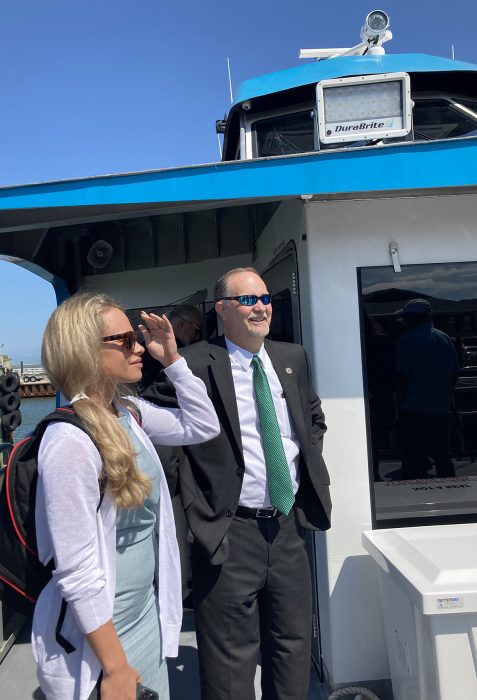
In addition to the new passenger ferry, the division also maintains an emergency route between Stumpy Point on the mainland and Rodanthe on Hatteras Island for when storm damage makes N.C. 12, the island’s only highway, impassible.
As part of the state’s transportation infrastructure, the ferry system has more than pulled its weight, Boyette told attendees at the event. In Cherry Point and Aurora, it brings people to their jobs every day. In Knott’s Island, it transports children to their schools. But the ferries are also big helpers after storms and other disasters, he said, transporting emergency workers and food, vehicles and fuel.
And the secretary credited the staff, “the heart of our system,” for its role over its 75 years of existence in helping communities and keeping things running despite challenges.
“This ferry system does a lot,” Boyette said. “It’s been a safe, reliable and efficient transportation system.”








